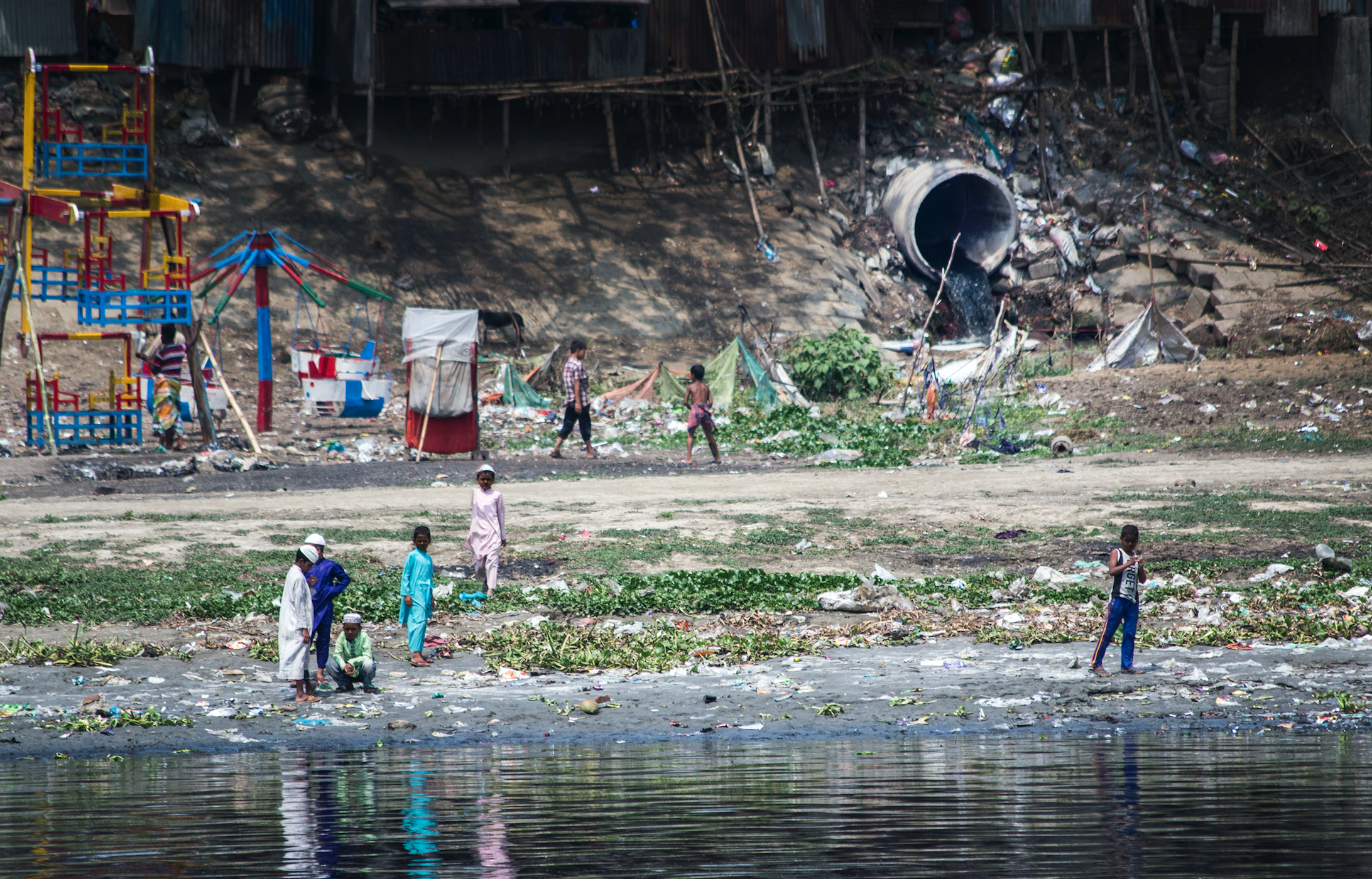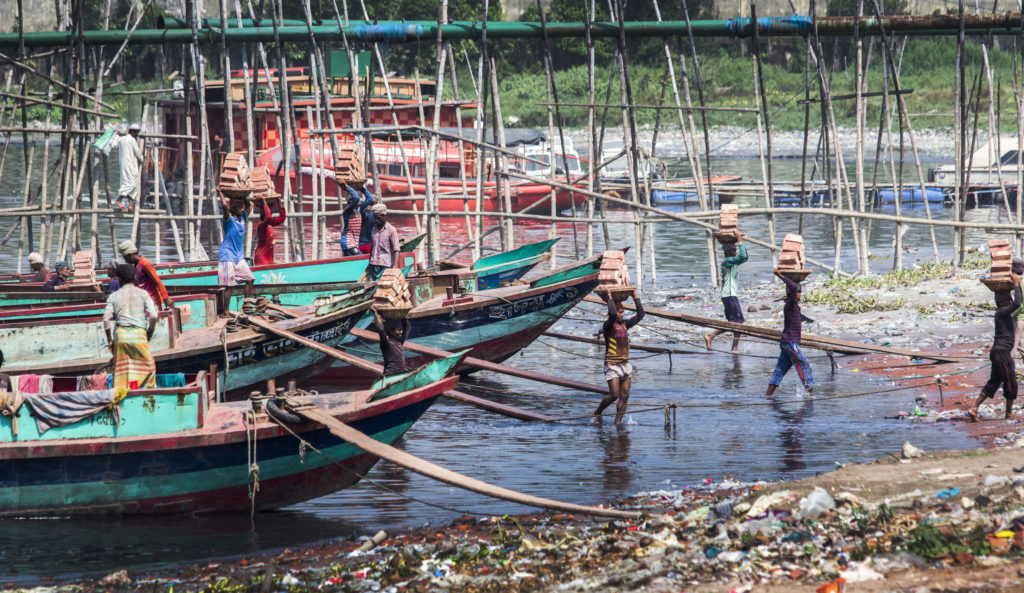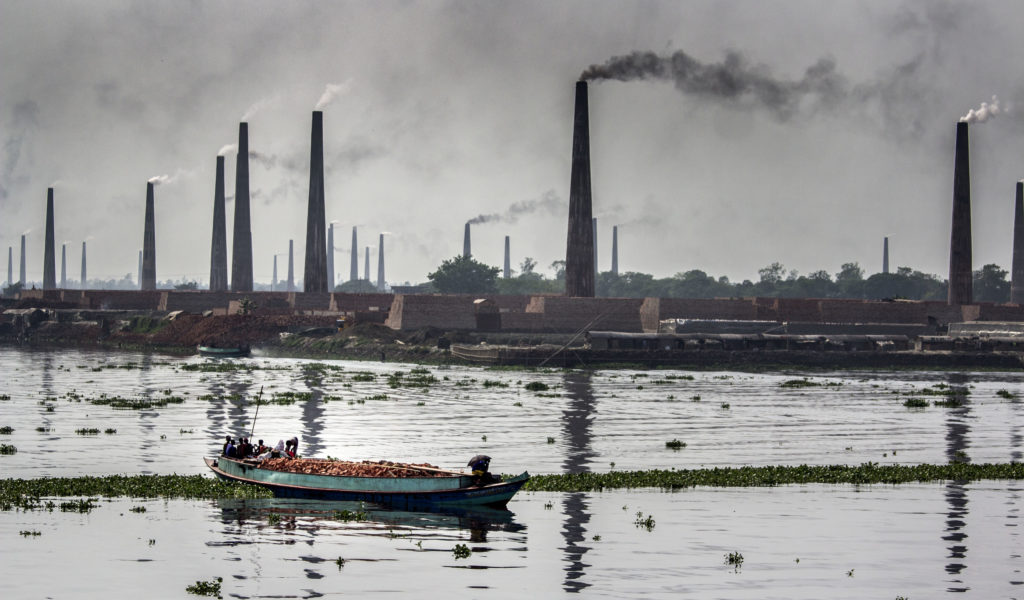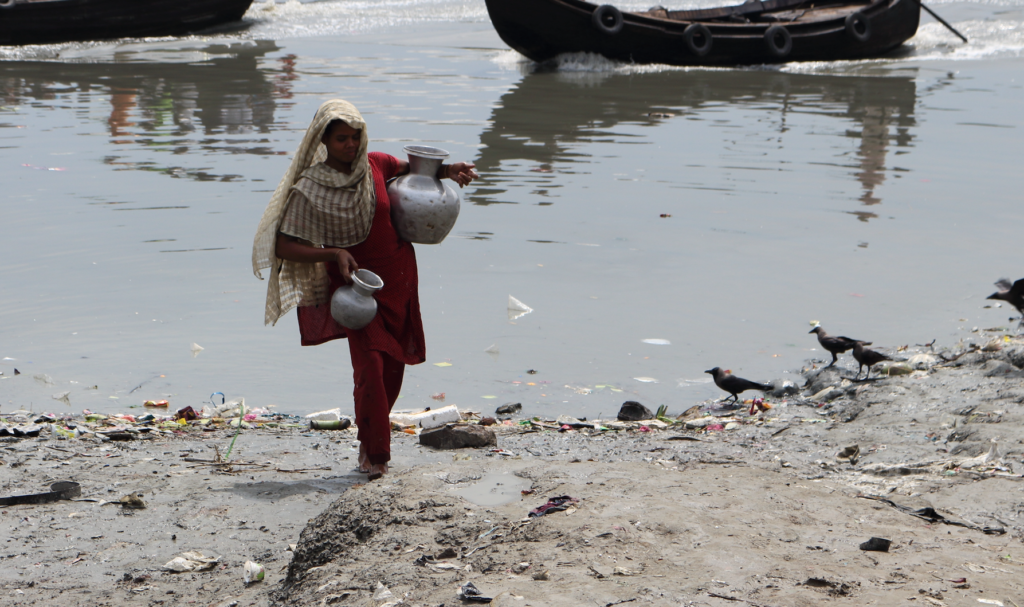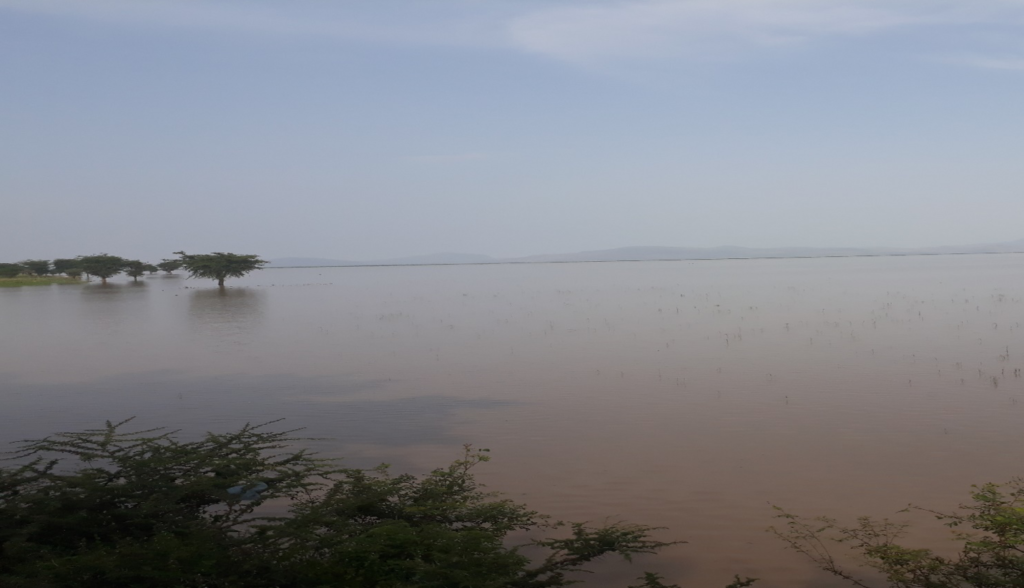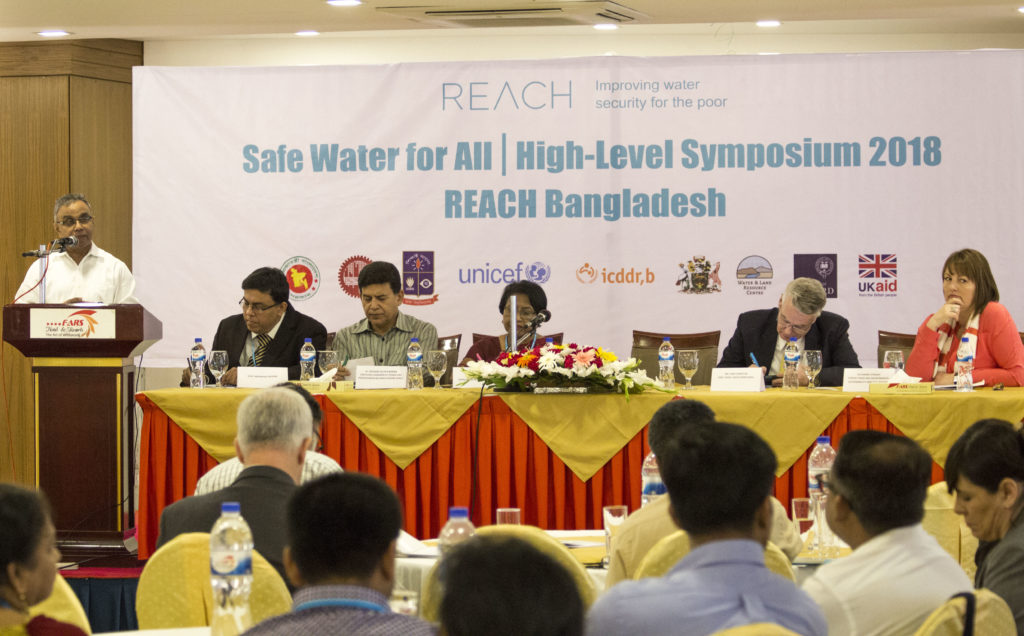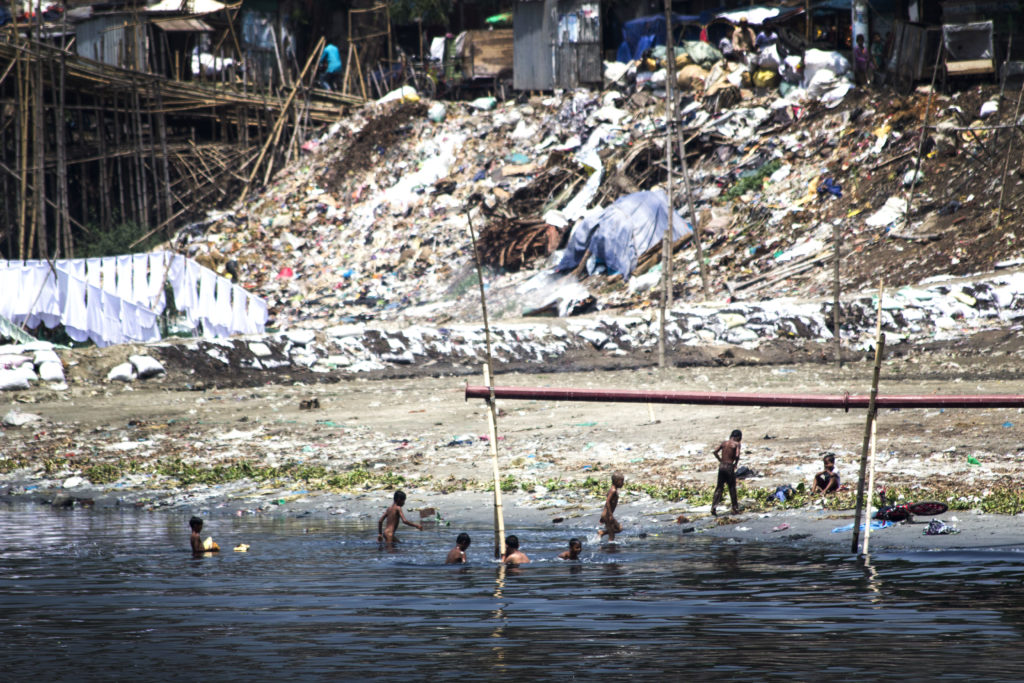Dr. Rob Hope, University of Oxford, Prof. Mashfiqus Salehin, Bangladesh University of Engineering and Technology and Dara Johnston, UNICEF Bangladesh
A large concrete pipe belches untreated sewage into the Buriganga River in Dhaka, whilst men wade through the water to shift aggregate to construct more buildings for more people. The riverbanks team with life and colour as hospital bed sheets dry after being recently washed in the river, bamboo poles float-in-waiting for the next tower block and mountains of fresh fruit lie ready for sale in nearby markets while countless children play without a care in the water.
Despite the ominous colour of the dark water, dolphins occasionally emerge in isolated pockets of the river providing a glimmer of a distant past and possible future for water security in this vast and energetic city. The many rivers that weave through Dhaka provide a glimpse of a former, regional trading hub which defines its islands of industrial innovation, social deprivation and ecosystem damage.
Water risks and returns pervade Bangladesh from Dhaka city to coastal communities living in polders under periodic but severe threat of flooding, to the vast rural hinterlands where safely-managed drinking water services need to overcome water quality and institutional constraints to reach every school, clinic and village. Making Bangladesh water secure is a government priority and defining development challenge spanning multiple ministries with a huge investment portfolio.
In April, the DFID-funded REACH programme convened its third annual conference with a global and national consortium of partners to discuss progress in the science-practitioner partnership, working to provide world-class science to align with government priorities to make at least five million poor people water secure by 2022 (access presentations here).
Led by the University of Oxford in partnership with UNICEF, insights and evidence from Kenya and Ethiopia illustrated issues and responses to building water secure towns in fragile environments in Turkana County, Kenya, and understanding hydro-climatic risks in the Awash river basin, Ethiopia, to avoid water-related economic and poverty drag.
A High-level Symposium on Safe Water for All on April 12th was a focus for REACH’s work in Bangladesh with government ministries convened under the guidance the Prime Minister’s Office’s Principal Coordinator for SDG Affairs, Mr. Abul Kalam Azad. Mr. Toby Roycroft from DFID-Bangladesh outlined the relevance and role of the REACH programme within the UK’s wider and long-term commitment to eradicate poverty and to promote growth. The UK’s long and productive trading relationship with Bangladesh was featured in a speech by Primark’s Director of Ethical Trade and Environmental Sustainability, Katharine Stewart, discussing areas for collaboration linked to the corporation’s strategic investments in Bangladesh.
Achieving river water security in Dhaka featured recent modelling, mapping and monitoring of water quality risks in a new paper published in Science of the Total Environment. This foundational work which understands the systemic nature of river risks and the need to identify targeted areas for intervention is being supported by investigating new technologies to quickly and cheaply test toxicity through biosensors in the river and industry. In partnership with the Greater Dhaka Watershed Restoration Work-stream, the Department of Environment, Bangladesh Water Development Board and the Water Resource Planning Organisation, REACH is convening industry, government and academic partners to understand and respond to how river quality risks can be mitigated by working with riparian communities, industry, agriculture and Dhaka’s Supply and Sewerage Authority (WASA). A recent survey of 1,800 riparian households identified river and canal pollution as a dominant concern. More detailed analysis is being advanced in tandem with qualitative work to explore the often hidden norms and practices which exclude or marginalise certain groups, so new interventions can better target the poor.
Coastal water risks requires new thinking on the appraisal and sequencing of investments in infrastructure and institutions. Traditionally, engineering interventions have promoted a standard approach that has not incorporated environmental, social or livelihood variability. Early results indicate there is merit in and insights from risk-based modelling of multiple and intersecting pathways of water security at the polder level. This is being supported by detailed interdisciplinary analysis in one polder, with insights into risks associated with different drinking water supplies and how some groups are excluded, particularly in areas of high salinity. Wider regional analysis and modelling of the polder system will advance this work to provide government partners and UNICEF with scientific evidence to guide future investments.
Institutional models to manage drinking water risks for the majority of the rural population have long been challenged by water quality contamination at the waterpoint source or household storage. Source pollution from arsenic is well-documented but a doubling of private, shallow tubewells in the last decade without associated testing, marking or monitoring of arsenic levels underlines public health risks and the need to rethink operational and management models. High levels of E-coli contamination of household storage is reported from analysis of all welfare groups with associated healthcare expenditure. With over 100,000 schools in Bangladesh, monitoring safe water services for children is being advanced with testing ‘data loggers’ reporting hourly usage by automated SMS messages to monitor the usage, performance and functioning of infrastructure, and to inform future planning and investments based on demand. Ongoing work is identifying how working at scale can reduce operational, institutional, financial and health risks to keep safe water flowing for all.
The REACH programme will continue to work closely with our government, academic and private sector partners in Bangladesh, Ethiopia and Kenya to advance work with meaningful and concrete action to deliver water security for the poor. Next year we will convene in Oxford in March 2019 for the fourth annual conference and we hope to see you then.

